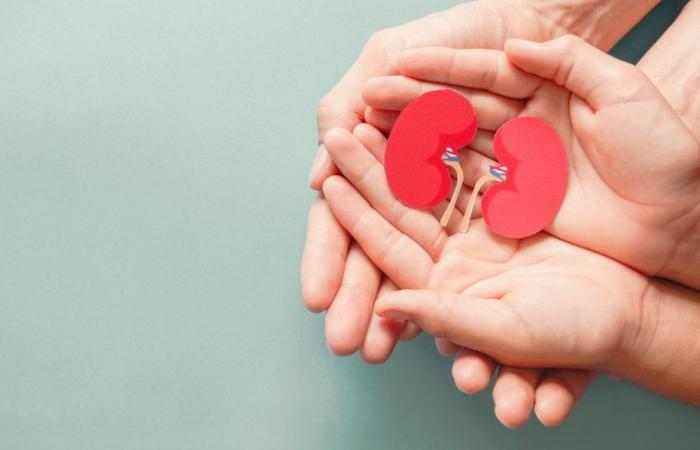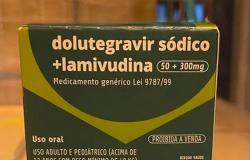Qhen talking about chronic kidney failure, hemodialysis is the first treatment that comes to mind. Still, it’s not the only one. Do you know what peritoneal dialysis is? In an interview with Lifestyle to the MinuteEdgar Almeida, nephrologist and president of the Portuguese Society of Nephrology, explains what this alternative consists of.
“This technique also makes it possible to reduce the number of unplanned visits to the hospital, also reducing the costs related to these same trips and the time allocated, with a positive impact on the patient’s quality of life”, he explains.
On this World Kidney Day, which takes place this Thursday, the doctor also discussed the importance of this organ, the evolution of treatments and how it is possible to live with just one kidney.
How important are the kidneys in the body?
The kidneys play a fundamental role in health and general well-being, having the function of purifying toxic substances from the blood, eliminating them through urine. Furthermore, they are responsible for controlling the body’s hydration, electrolytes (mineral salts) and acid-base levels.
Edgar Almeida is a nephrologist and president of the Portuguese Society of Nephrology© Hospital da Luz
What are the most common diseases that affect kidney function?
The diseases that most often affect the kidneys are diabetes and high blood pressure. These two diseases contribute to almost half of cases of chronic kidney disease. Pyelonephritis (kidney infection), glomerulonephritis (glomerular damage caused, for example, by inflammation), renal lithiasis (‘kidney stones’), congenital and genetic diseases are examples of other diseases that affect the kidneys.
What are the main risk factors for this type of disease?
The main risk factors for kidney function diseases are a family history of kidney disease, aging, diabetes, hypertension, obesity, repeated episodes of urinary tract infections.
Read Also: Scientists create ‘map’ of the developing human heart
How can risks be prevented?
It is normal over the years for there to be a gradual decrease in kidney function. Prevention is based on adopting healthy lifestyle behaviors, controlling risk factors, as well as regular follow-up at medical appointments so that, if the disease exists, it is detected early.
Chronic kidney failure is one of the most talked about and common diseases. What is the incidence in Portugal?
In Portugal, according to data from the Portuguese Society of Nephrology, approximately 10% of the population suffers from chronic renal failure.
In addition to hemodialysis, patients have two other forms of treatment available: peritoneal dialysis or transplantation.Is this a disease with no cure?
Chronic kidney failure is a disease with no cure. Treatment aims to prevent progression to a stage where replacement of kidney function becomes inevitable. To do this, it is necessary to detect early the signs that show kidney disease in individuals at risk.
Is hemodialysis the only possible treatment? What does it consist of?
When progression cannot be prevented, due to late diagnosis or other reasons, it may be necessary to undergo renal replacement treatment. In addition to hemodialysis, patients also have two other forms of kidney function replacement treatment available: peritoneal dialysis or transplantation. Hemodialysis is a therapeutic option in which blood is filtered outside the body using a hemodialysis machine and a manufactured membrane, called a dialyzer, which acts as an artificial kidney. During hemodialysis, the hemodialysis machine removes a small amount of blood from the body through a needle or catheter. The dialyzer then cleans the blood, removing waste, toxins and excess fluid, which is returned to the body. Hemodialysis treatments take place in a hospital or dialysis clinic under the supervision of a team of healthcare professionals.
And what does peritoneal dialysis consist of? What are the advantages and disadvantages for users?
Peritoneal dialysis is a therapeutic option that uses the lining of the patient’s abdomen to filter and clean the blood. It is a painless treatment and does not involve the constant use of needles. Peritoneal dialysis, which can be performed at home while the patient sleeps, allows greater flexibility and independence compared to hemodialysis. It is a treatment that can be adapted to the patient’s lifestyle, making it possible to work, study or travel while the treatment is carried out. This technique also makes it possible to reduce the number of unplanned visits to the hospital, also reducing the costs related to these same trips and the time allocated, with a positive impact on the patient’s quality of life. From a clinical point of view, in the case of dialysis with telemonitoring, access to treatment-specific data is more agile and allows for more proactive monitoring by health professionals, there is faster detection of problems associated with the treatment, a closer and more frequent monitoring, as well as greater availability for appropriate support. The possibility of reducing all these costs in terms of resources, travel and time allocated with the implementation of telemedicine in peritoneal dialysis, with the telemonitoring platform in home dialysis, translates into a better balance between professional and personal life, greater independence and autonomy for the patient and also savings for both the patient and the hospital and, ultimately, for the National Health Service (SNS).
Why is hemodialysis the most common treatment technique?
Hemodialysis is a very old technique, so the procedures and equipment have also undergone numerous evolutions over time. Furthermore, treatments take place in hospitals or clinics under the supervision of a team of healthcare professionals, allowing the patient to undergo treatment in their own location, with less intrusion into family life. However, under certain conditions, home hemodialysis is possible. To opt for a technique such as peritoneal dialysis, it is important that, in the decision phase, patients can contact other patients undergoing therapy so that their decision is well-founded. Despite all information efforts, health professionals are still not able to fully convey the experience of peritoneal dialysis. Ideally, the patient can choose the treatment that best suits their physical, emotional needs and lifestyle.
Proof of the evolution of treatments is the emergence of therapies such as peritoneal dialysisHave treatments evolved in recent years, in relation to studies and research carried out?
In recent years, the science surrounding kidney disease has evolved significantly and, as it is a disease with no cure, the focus is increasingly on prevention to delay or even prevent the loss of kidney function. When it comes to treatments, proof of its evolution is the emergence of therapies such as peritoneal dialysis, which uses a cycler to carry out dialysis exchanges. The cycler is programmed to administer the exact amount of dialysis prescribed by the doctor, and normally, a peritoneal dialysis program lasts between 8 and 12 hours and is carried out overnight. Furthermore, if the peritoneal dialysis cycler has remote patient management capabilities, patients will be able to collect detailed information about their treatment at home on a daily basis and send it to the doctor in the hospital. This can remotely monitor the progress of the treatment, change the machine’s program and talk to the patient about any problems they have.
Is it possible to live with just one kidney?
It is possible to live with just one kidney and this does not affect life expectancy. In cases where a person is born with only one kidney or when, due to illness, a kidney is removed, the tendency is for the existing kidney to grow and become larger and heavier, in a logic of compensating the function of the kidney. other. This kidney will have to work harder, guaranteeing around 75% of kidney function, instead of the expected 50%.
What care should a person living in this condition take?
It is important to choose a healthy lifestyle, maintain an adequate diet, have regular medical supervision and practice regular physical exercise. You should take precautions when it comes to activities that could cause trauma to the single kidney, such as contact sports such as football, kickboxing or karate.
What can lead to the loss of a kidney?
The kidney may need to be removed due to a urinary obstruction, a tumor or an injury caused by an accident. However, around one in every 750 people is born with just one kidney (renal agenesis) and it may happen that one of the kidneys is donated.
Is kidney transplant a common procedure in Portugal?
The latest data released by the Portuguese Blood and Transplantation Institute indicates that 285 kidney transplants were performed in 2023, 62 more than in the previous year.
What is the success rate of this surgery?
Kidney transplants are generally successful. According to data from the Portuguese Transplantation Society, the success rate after a kidney transplant is 95% after one year of surgery and 81% after five years.
Is it possible to receive a kidney from anyone?
No. To have a kidney transplant, you must be medically fit and stable. The donor’s blood type and tissue type must be compatible with the recipient’s to ensure that the recipient’s immune system does not automatically reject the transplanted kidney.
Read Also: Think you know how important the kidneys are for health? Look no
Download our free App.
Eighth consecutive year Consumer Choice for Online Press and elected product of the year 2024.
* Study by e Netsonda, Nov. and ten. 2023 product of the year – pt.com
Download our free App.
Eighth consecutive year Consumer Choice for Online Press and elected product of the year 2024.
* Study by e Netsonda, Nov. and ten. 2023 product of the year – pt.com







